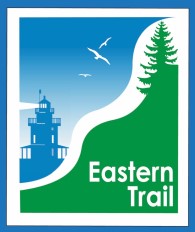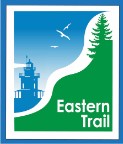
[Note: This article appeared in the Spring 2014 Newsletter. The full newsletter can be viewed in this pdf document]
by John Andrews
 Who uses the ET? Where do users come from? What does the average visitor spend on ice cream? Boots? Bicycles? Lodging? Beyond a little casual knowledge— I’ve met cyclists on the ET who came from Vermont, New York and Quebec just to bike the ET— we have no measured data. We intuit that these users must benefit local economies, but we haven’t yet quantified those benefits. How can we measure them? What have others done?
Who uses the ET? Where do users come from? What does the average visitor spend on ice cream? Boots? Bicycles? Lodging? Beyond a little casual knowledge— I’ve met cyclists on the ET who came from Vermont, New York and Quebec just to bike the ET— we have no measured data. We intuit that these users must benefit local economies, but we haven’t yet quantified those benefits. How can we measure them? What have others done?
Carl Knoch, Northeast Trails Development Manager for the Rails to Trails Conservancy (RTC), wanted to answer these questions for a Pennsylvania trail. He electronically counted users and asked hundreds of Pennsylvania trail users to answer self-mailing questionnaires. With the results, he began to measure the trail’s economic impact, learning how many people
used the these trails, where they came from, and what they spent RTC has subsequently applied Carl’s methodology to dozens of trails and published the results, all the while evolving a better, more refined methodology.
This season, thanks to a generous grant from Kennebunk Savings Bank, ETA will be applying Carl’s methods to measure the economic impact on the local communities of the off-road sections of the ET from Kennebunk to Scarborough. The process has already begun: Canadian-made infrared electronic counters are being tested; and self-mailing surveys are being printed. ETA plans to publish its economic impact study at the end of 2014. And you can meet Carl Knoch, who will be the feature speaker at ETA’s annual meeting on May 15.
(See a related article here.)
Share this Story:












0 comments
Write a comment